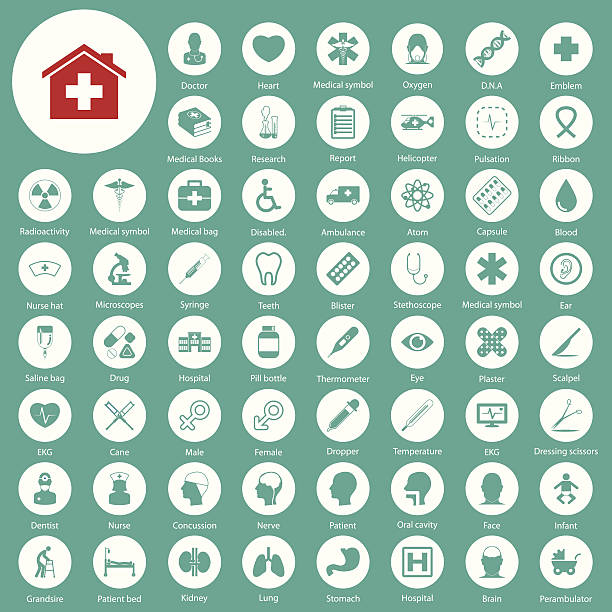Understanding Lung Cancer: Survival Without Treatment
Introduction
Lung cancer is one of the most common and serious types of cancer, with significant impacts on a person’s health and longevity. When diagnosed with lung cancer, patients are often faced with difficult choices regarding their treatment options. One of the most pressing questions for many is: "How long can someone live with lung cancer without treatment?" This question is complex, as it involves many factors including the type of lung cancer, its stage, overall health of the patient, and available support systems.
The Nature of Lung Cancer
Lung cancer primarily originates in the lungs but can also spread to other parts of the body. There are two main types of lung cancer: non-small cell lung cancer (NSCLC) and small cell lung cancer (SCLC). NSCLC is more common and generally grows and spreads more slowly than SCLC. SCLC is less common but tends to be more aggressive and spreads more rapidly.
Lung cancer is often categorized into stages, ranging from Stage I, where the cancer is localized, to Stage IV, where it has spread to other parts of the body. The stage at diagnosis plays a crucial role in determining prognosis and survival rates, whether treatment is undertaken or not.
The Impact of Not Receiving Treatment
Choosing not to undergo treatment for lung cancer can have profound implications. Without treatment, the cancer continues to progress, and the patient’s health typically deteriorates. The rate at which this happens varies from person to person, influenced by the cancer's stage, type, and the individual’s general health.
In the early stages, lung cancer may not present noticeable symptoms, and individuals might not experience significant health issues. However, as the disease advances, symptoms such as persistent cough, chest pain, weight loss, and difficulty breathing become more apparent. These symptoms can significantly impact quality of life and may indicate that the cancer is progressing.
Survival Estimates Without Treatment
Estimating survival without treatment involves understanding various factors. Generally, lung cancer prognosis is poor without medical intervention. Statistics show that the survival rate for patients with lung cancer is much higher with treatment compared to those who do not receive any form of care.
For individuals with Stage I lung cancer who choose not to undergo treatment, survival rates are relatively low. In many cases, the cancer progresses to a more advanced stage within months, leading to a dramatic decrease in life expectancy. For advanced stages, such as Stage IV, where the cancer has metastasized, the prognosis without treatment is even more grim. Patients may only live for a few months to a year, depending on various individual factors.
Factors Affecting Survival
Several factors influence how long a person with lung cancer can live without treatment. These include:
- Cancer Type and Stage: As mentioned earlier, the type and stage of cancer are critical in determining survival. NSCLC generally has a better prognosis compared to SCLC, but without treatment, even NSCLC can lead to a rapid decline in health. The stage of the cancer at diagnosis also plays a crucial role; early-stage cancers may progress more slowly than advanced-stage cancers.
- Overall Health: The general health of the patient greatly affects survival. Individuals with other underlying health conditions, such as heart disease or chronic respiratory problems, may experience a more rapid decline in health when faced with lung cancer.
- Age: Younger individuals often have a better chance of living longer, even without treatment, compared to older adults. This is because younger patients typically have a stronger immune system and overall better health.
- Lifestyle Factors: Factors such as smoking history, diet, and physical activity level can also influence survival rates. Smokers with lung cancer may experience more severe symptoms and a faster progression of the disease.
Quality of Life Without Treatment
Quality of life is a significant concern for patients with lung cancer, especially those who choose not to receive treatment. Without treatment, the focus often shifts to palliative care, which aims to manage symptoms and improve comfort rather than extend life. Palliative care can help address issues such as pain, breathing difficulties, and other symptoms that arise as the disease progresses.
Without treatment, the quality of life tends to decline as the cancer spreads. Patients may experience severe fatigue, pain, and difficulty performing daily activities. The psychological impact of living with an untreated, progressive illness can also be significant, potentially leading to feelings of depression and anxiety.
Support Systems
Even if treatment is not pursued, having a strong support system is crucial for managing the disease and maintaining quality of life. Support from family, friends, and healthcare professionals can help alleviate some of the emotional and physical burdens of the disease. Hospice care and support groups can also provide valuable assistance in managing symptoms and providing emotional support.
Conclusion
Living with lung cancer without treatment is a challenging and complex situation with generally poor outcomes. The survival rate without treatment is significantly lower compared to those who receive medical intervention. The progression of the disease can lead to a rapid decline in health and a reduced quality of life. Understanding the nature of lung cancer, the factors affecting survival, and the importance of support systems can help individuals make informed decisions about their care and manage their condition more effectively.




